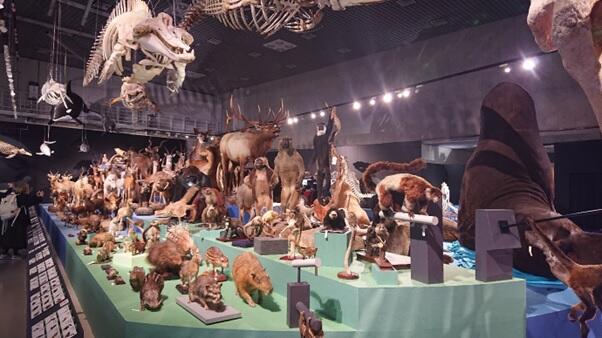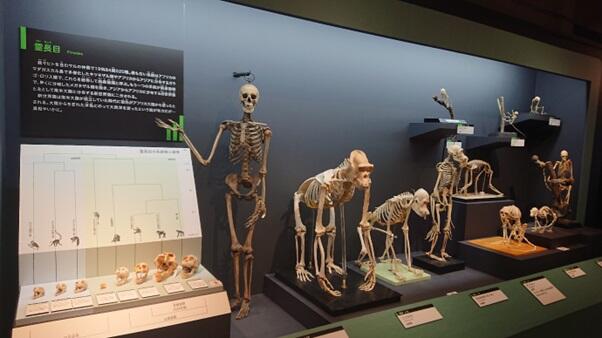The National Museum of Nature and Science (Taito City, Tokyo) is holding the special exhibition "Mammals 3-The Parade of Life" until June 16. Five years after the "Mammals 2" exhibit, the theme for the ongoing exhibition of this series is "taxonomy (classification)" and "systematics (evolutionary relationship)." With more than 500 specimens, the exhibition explores the wonders of mammals, by classification based on appearance, internal features, DNA, and other factors, followed by analysis to find the relationships among the classified groups. The exhibition is co-sponsored by Asahi Shimbun, TBS, and TBS Glowdia.

Sugar Gliders are classified in a different group from the Japanese dwarf flying squirrel or the Japanese giant flying squirrel, which are similar in appearance. Meanwhile, hippopotamuses and dolphins which have no apparent or biological similarities are present in the same group. These examples of mammals that "look alike but are essentially different" and those that "look different but are essentially the same" represent one of the fascinating aspects of mammalian research.
At the exhibition, visitors can explore the wonders of mammalian evolution and diversification, as well as their high degree of adaptability. They can also compare valuable specimens, such as skeletons and internal organs, which provide clues to classification. On the large stage across the center of the venue, the collection of stuffed specimens of mammals, of which the museum is proud, marches in a parade. The scale of the parade has been increased from that of the last exhibition, and visitors can enjoy approximately 200 land and marine mammals marching in groups with close relationship to each other. The only stuffed specimen of a northern elephant seal in Japan is being exhibited for the first time. Also, stuffed specimens of a skeleton of the entire body of an Asian elephant, a baby black rhinoceros, a southern pudu, and a yellow-spotted rock hyrax are on display for the first time.
Approximately 30 specimens will be unveiled, including skulls, pelvic bones, and internal organs, which were used as clues for classification. Moreover, there is a life-size replica of the heart of a blue whale, the largest animal on earth, from the collection of the Royal Ontario Museum in Canada on display.

The special exhibition consists of four chapters, Chapter 1: "What are Mammals?"; Chapter 2: "Taxonomy and Systematics- Classification and Evolutionary Relationship"; Chapter 3: "Real Mammals: The Parade of Life"; and Chapter 4: "How Mammals Are Classified-From Past to Future." This covers all aspects from the basics to the latest research findings on mammals. The exhibit is family-friendly and enjoyable for both children and adults.
This article has been translated by JST with permission from The Science News Ltd. (https://sci-news.co.jp/). Unauthorized reproduction of the article and photographs is prohibited.




